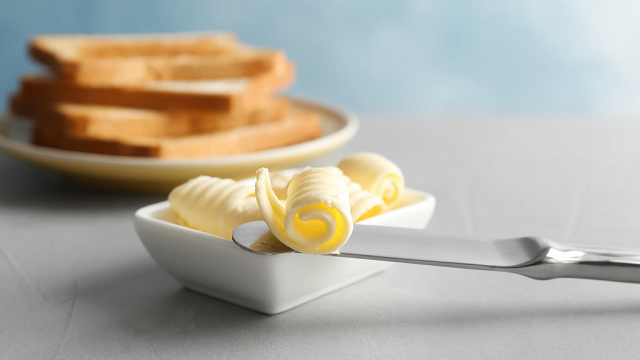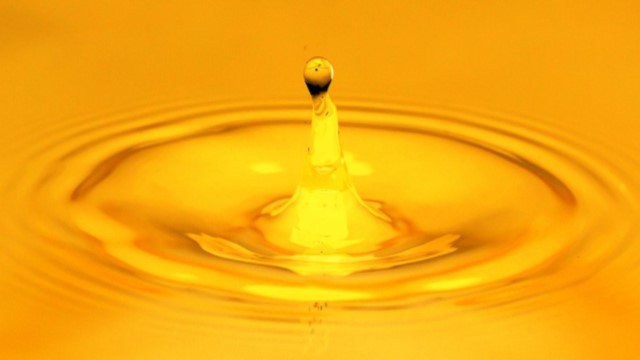Q&As about the Alfa Laval Margarine Plant Systems
About Alfa Laval, Rono and the Margarine Plant Systems
- Are there standard capacities for the Alfa Laval Margarine Plant Systems available for shortening? For margarine? No, there is no standard capacities because the capacities always tailored to customer requirements.
- Most margarine plants typically share the same location as oil refineries that have hydrogen facilities. Can you build a margarine plant as an independent production facility? If so, what factors should be taken into consideration? Yes, a margarine plant can be established as an independent installation with a dedicated tank farm. There is no need to combine a margarine plant with an oil refinery.
- What is the relationship between production capacity and cooling capacity? There is no strict relationship between production capacity and cooling capacity. Factors such as the recipe, oil ingredients and type of product influence both the production capacity and the cooling capacity.
About margarine, shortening and the recipe
- What is anhydrous margarine? Anhydrous means ‘containing no water’; anhydrous margarine is therefore a vegetable fat compound, similar to shortenings, that contains minimal water.
- Can you use the same process and equipment to produce a margarine containing 20% fat as you do for shortening? No, we do not recommend using the same equipment to prepare a margarine emulsion and shortening.
- Are there any special considerations to keep in mind for soft, low-calorie, high-water-content halvarine margarines? For low fat and half-calorie margarine, or halvarines, it is important to create a stable emulsion from the start and to ensure the proper design of the emulsion tanks. Furthermore, water quality is important—and the product must be pasteurized.
- What changes in product behaviour can be expected when using fractionated components? This largely depends on the recipe. Using fractionated components leads to a wide range of product behaviours. However, it is important to recognize that fractionated oils are essential to being able to obtain various products with good quality.
About water & oil phase
- To produce a good mixture of water and oil in margarine, what is the ideal percentage for the emulsifier? There is no golden rule as the percentage largely depends upon the ingredients. As a guideline, the percentage may run anywhere between 0.3-0.6 %.
- How do you reduce shrinkage in puff pastry? To ensure that the product is more elastic, you can reduce lecithin dosage in the recipe by 0.1-0.2 %.
- What should be quality parameter of feed oil for margarine? The oil feed must be refined oil with a free fatty acids content of 0.05 % maximum and no peroxide.
- Can product throughput be improved by using nonhydrogenated oil? It may be possible to improve product throughput by using palm stearin and hard stearin IV with values of 12-13 instead of using hydrogenated oil.
- Which chemical is best suited for emulsified butter? In my experience, I found monoglycerides to be effective for producing emulsified butter.
- How does the oil blend affect ‘oiling out’ issues in margarine during storage? Ensuring a proper and stable emulsion as well as proper treatment in the subsequent crystallisation process helps prevent oiling out issues during storage. It is also important to adapt storage temperature and time accordingly, depending on the product, the recipe and the processing parameters.
- How can you prevent post-hardening of palm oil products—especially fat used for filling applications? The recipe plays a vital role in preventing post-hardening of palm oil products. Preparing a good emulsion and using lecithin also helps minimize palm oil post-hardening.
About mixing, blending and dosing
- Can you improve the thickening process, or emulsification, by using a high shear mixer? Yes, a high shear mixer or agitator can contribute to creating smaller water droplets, which in turn increase plasticity and improve thickening.
- What is the recommended agitator speed when mixing the oil phase and water phase? The recommended agitator speed depends on several factors, including tank shape, tank dimension and type of agitator. Generally speaking, the agitator speed can range from between 30 rpm and 70 rpm.
- How do you improve plasticity in margarine? Improved plasticity can be achieved by using a high shear mixer.
- Is there a high shear mixer in the water phase mixing system? No, there is no need to use a high shear mixer in the water phase. However, the use of a high shear mixer is recommended in the emulsion phase.
- Can you use a high shear mixer to produce pourable shortening? We do not recommend the use a high shear mixer to produce pourable shortening. There is no need to do so.
- Can you use a palm-based oil blend to minimize post-hardening issues in margarine? Yes, you can a palm-based oil blend to minimize post-hardening issues using a tank above load cells and a tank with an agitator.
About Crystallization
- Can you explain how to define the application of crystallizer and pin worker? Selecting the right crystallizer (scraped surface heat exchanger) and pin worker always depends on the product, recipes and type of filing and packing. Products that are filled smoothly require less cooling and more treatment to ensure the right crystallization structure. In addition, the SSHE and pin worker sizes and types depend on the product capacity.
- What are the differences between a pin worker unit and a plasticator? A pin worker unit and a plasticator differ in size or volume; pin worker typically handles 25-180 litres while a plasticator handles 25-50 litres. Another difference is the speed of the pin shaft, which runs at a higher speed on the plasticator. A pin worker unit is typically positioned at the crystallizer while a plasticator is placed in front of the filling machine.
- Please specify the parameters to keep in mind when using a pin worker unit to achieve the best plasticity for margarine? Volume and the shaft speed are the two main parameters to keep in mind when using a pin worker unit to achieve the best possible plasticity. Volume defines the resting time through the pin worker unit, and speed defines the treatment intensity. To ensure the product is not overworked, both parameters must be adapted to achieve the right texture for a specific product.
- Can using the new high-pressure crystallization system prevent the maturation process of liquid shortening? (emulsified) No, the crystallization system does not affect the maturation process of liquid shortening.
- How can we reduce shrinkage in puff pastry margarine? Puff pastry products require long crystallization times. Large cooling surfaces, an intermediate pin worker unit, large volumes of resting tubes and the right process temperature profile contribute to minimizing shrinkage.
- What is the maximum rpm of a plasticator? 1200 rpm.
- What is the ideal rpm for a pin worker unit? Ideally, it should be approximately 200-350 rpm, depending on the product and the recipe.
- What is the difference between a standard pin worker unit and a pin worker unit used for shortenings? Generally speaking, there are no differences except for the duration of treatment time. The recommended treatment time for processing margarine is one minute while the recommended treatment time for processing shortening is approximately 2.5 minutes.
About pasteurization and preservation
- Why use a small plasticator with 850-900 rpm? The plasticator is a pin worker unit for intensive treatment, generally only 15-20 seconds, of margarine and edible fat products, to achieve a proper crystallisation and smooth texture of the product prior to the filling line. Sizes and shaft speed always depend on the end product.
- What is the ideal temperature for the pasteurization process? How long is the contact at that temperature? The ideal temperature for the pasteurization process is 85°C for approximately 17 seconds.
- What is the most suitable heat exchanger for pasteurization? The choice of heat exchanger largely depends on the product. The degree of viscosity or the percentage of proteins are the main criteria that determine which plate heat exchanger is most suitable. In most cases, Alfa Laval generally recommends selecting a scraped surface heat exchanger for use as a pasteurizer.
- What are your recommendations for preventing the growth of bacteria and fungi when producing margarine without salt? Margarine formulations without salt must be manufactured with care using citric acid, potassium sorbate or tartaric acid as the preservative.
- What is ideal storage temperature for margarine? What is the typical shelf life at that temperature? The ideal storage temperature depends on the recipe and end consumer. Industrial margarine can be stored at 16°C. Most recipes call for a storage temperature of 10°C while the ideal storage temperature for table margarine is 4°C.
- What is the recommended cooling surface for 3000 kg/h production of margarine that contains 15% water? The recommended cooling surface for margarine containing 15% water depends on type of packaging but is approximately ≥ 1.5 – 2 square metres.
- Is it possible to add an FDA-approved preservative to prevent microbial growth in margarine containing 18% water? Yes, citric acid, brine, tartaric acid, or potassium sorbate may be used as a preservative that meets US Food & Drug Administration requirements to prevent microbial growth in margarine containing 18% water?
- Is it possible to produce margarine with water content 18% without using a preservative? If so, how long we can keep this product at ambient room temperature? Yes, it is possible produce margarine with water content 18% without using a preservative. However, it is important to ensure that:
- the quality of the water is sufficiently high
- that no proteins are used
- an emulsion pasteurizer is used
- a proper cooling chain is in place before delivery to end user
- In best case scenario, depending on the ambient temperature, the product shelf life may be between two and three months. However, with a proper cooling chain, that shelf life can be extended to between six to 12 months.
- What is the main cause of margarine discolouration when properly stored? Discolouration of margarine when properly stored can result from exposure to bacteria or enzymes. Oil quality and fresh oil without peroxide help ensure good margarine quality.
About Alfa Laval Contherm
- Do I still need to use the Alfa Laval Contherm if I use the RONO scraped surface heat exchanger (SSHE) to producing shortening? In terms of design, Is the Contherm similar to the RONO SSHE? No. There is no need to use the Contherm together with the RONO SSHE. However, using the Contherm can improve plant capacity. In terms of design the two are are similar; however, the SSHE operates more efficiently at low pressure.
- What is the annular gap for the SSHE? There are various annular gaps available, depending on the product and customer requirements. The standard annular gap is typically 10-11mm; however, 5-mm, 7-mm, 9-mm, and 15-mm gaps are available.
- What is the temperature of the refrigerant used in Contherm? The temperature of the refrigerant depends on the media used. For glycolate water, the temperature is generally -5°C and the typical temperature for ammonia can be -28°C.
- Why is Contherm used for precooling before crystallization? Contherm is a low-pressure scraped-surface heat exchanger that cools the product to the desired temperature before it enters the high-pressure section.
- Can using Contherm improve the crystallization of palm fraction-based margarine and shortening? Yes, using Contherm before cooling palm fraction-based margarine and shortening the scraped surface heat exchanger improves quality product.
About heat exchangers in margarine processing
- During palm kernel stearin production or cocoa butter substitute (CBS) production, can the scraped surface heat exchanger continuously operate for long time? To handle these products with ease, the scraped surface heat exchanger can be designed with a higher scraping rate to ensure that production can run continuously. Furthermore, it is possible to adapt the melting point of the stearin or CBS product to prevent crystals from adhering to the shaft.
- What is the optimal inlet temperature to the scraped surface heat exchanger? The optimal inlet temperature is approximately 45°C.
- What kind of heat exchanger should be used for ammonia or CO2? Ammonia remains the industry standard. Depending on local conditions, such as temperature, and the availability of fridge services, the CO2 cooling may be considered as an alternative.
- What type of heating systems do you recommend for restarting an entire plant in the event of a breakdown? For media with high melting points, any downtime may result in a system-wide shock. Recommendations for such heating systems depends largely on the type of equipment that breaks down. Mixing tanks are generally heated by a jacket surrounding the vessel while pipes are heated by double jackets using hot water. The scraped surface heat exchanger is heated using a hot water pipe inside the shaft.
About reworking
- How much product can be reworked? Excess or surplus product, typically about 3-5%, from the packing lines is continuously returned to the mixing tank as rework product. In the event of packing machine downtime, the rework capacity is 100%. This enables all excess product to be remelted in a continuous rework unit and to be recycled to the preparation tanks.
About Cleaning and Maintenance
- How frequently should Cleaning-in-Place take place? Cleaning-in-Place should be scheduled at least once a week; however, the frequency of CIP depends largely upon the recipe and sequence used.
- How do you prevent the water phase tank and pipes from becoming rusty? Using high water quality water with low levels of hardness and thorough CIP cleaning helps prevent rust from developing in the water phase tank and pipes.
- Does normal insulation work for process tanks? Hygienic process tanks generally are stainless steel vessels with AISI 304 jacket and insulation (not cladding).
- What type of pump is used to process liquid margarine containing 40% water? The type of pump used to process liquid margarine with a water content of 40% varies, depending upon the processing stage. In the preparation stage, lobe pumps are generally used. In the high-pressure section, piston pumps are generally the pump of choice.



